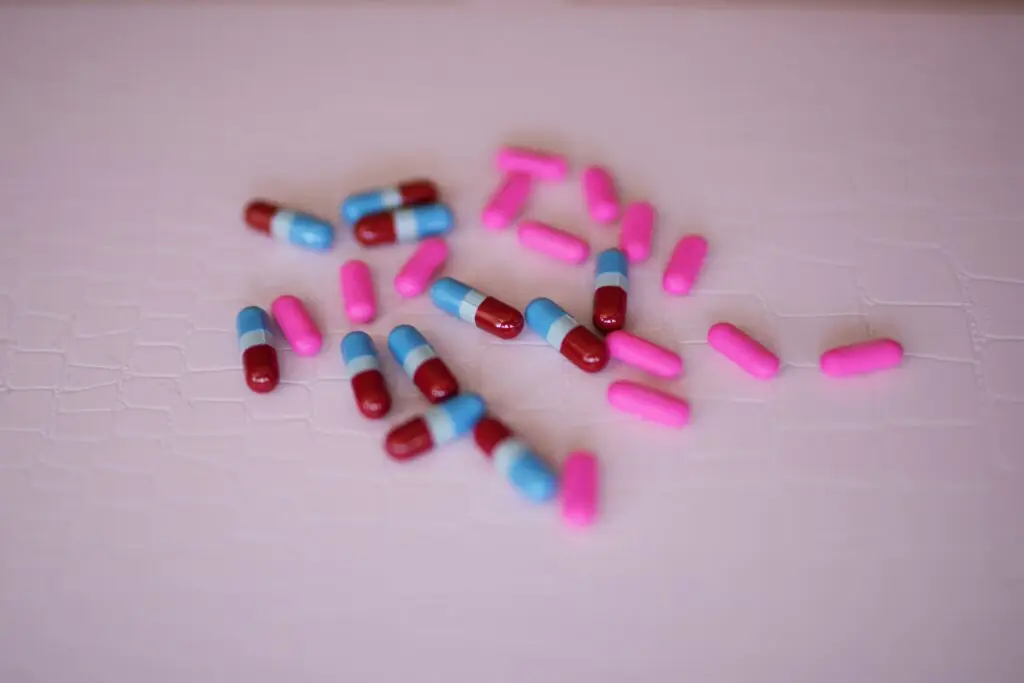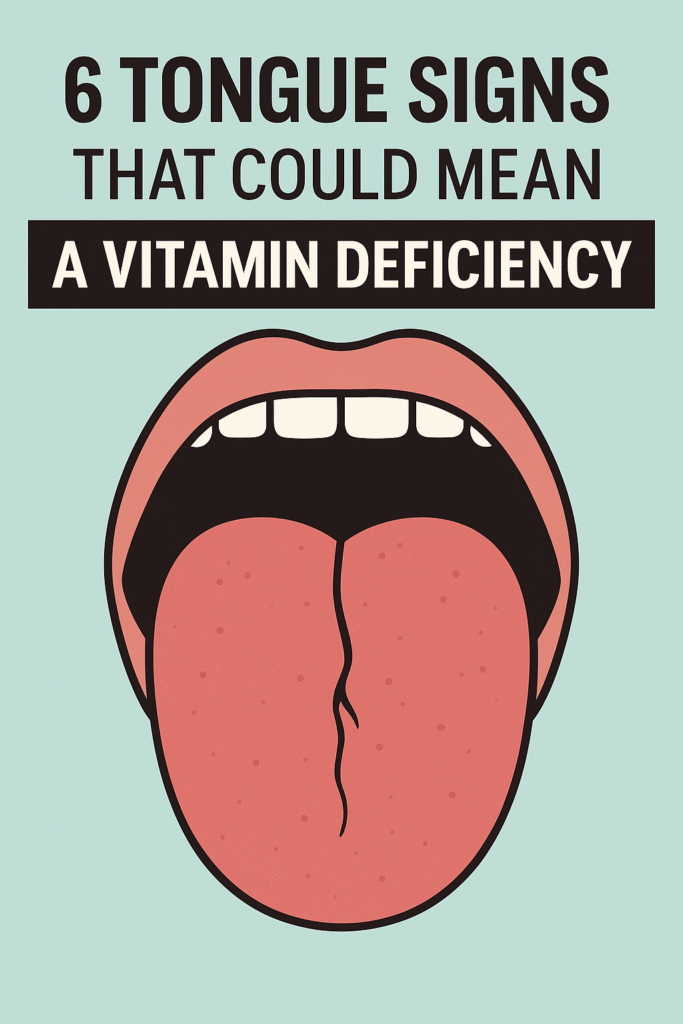
⚠️ Affiliate Disclaimer: This post may contain affiliate links, which means I may earn a small commission — at no extra cost to you — if you make a purchase through one of these links. I only recommend products or services I genuinely trust and believe can provide value. Thank you for supporting My Medical Muse!
7 Powerful Reasons Why Your Blood Pressure Drops After Eating (and Easy Fixes)
Let’s start with the basics, your blood pressure is the force of blood pushing against your artery walls as your heart pumps. It naturally fluctuates throughout the day, rising during activity or stress and falling during rest or sleep.
However, when you eat, your body goes through a complex process to digest food. This process requires extra blood flow to your stomach and intestines to absorb nutrients. To make this happen, your blood vessels in the digestive system widen (a process called vasodilation).
If your heart and nervous system respond properly, they compensate by:
- Increasing heart rate slightly
- Constricting other blood vessels
- Maintaining overall blood pressure balance
But in some people, this compensation doesn’t happen efficiently. The result?
Too much blood pools in the digestive area, and blood pressure throughout the rest of the body drops.
That’s the root of postprandial hypotension, low blood pressure after eating.
What Exactly Is Postprandial Hypotension?
The term might sound like something out of a medical textbook, but it’s actually simple when broken down.
“Postprandial” means after a meal, while “hypotension” means low blood pressure.
So together, postprandial hypotension literally describes a drop in blood pressure that happens after eating.
Medically, doctors define it as:
A decrease in systolic blood pressure (the top number) of at least 20 mmHg within two hours after eating.
For example, if your blood pressure before lunch is 120/80 mmHg and it falls to 100/70 mmHg or lower after eating, that’s considered a significant post-meal drop. While that may sound minor, even a moderate drop can make you feel dizzy, lightheaded, or weak, especially if your normal blood pressure is already on the low side.
Who Does It Affect Most?
This condition is especially common in certain groups:
- Older adults (over 60 years old): As we age, our arteries become less flexible and the body’s automatic reflexes that control blood pressure slow down.
- People with high blood pressure: Ironically, those who take medication to control hypertension are more prone to low blood pressure dips after meals.
- Individuals with Parkinson’s disease, diabetes, or autonomic dysfunction: These conditions interfere with the nerves that regulate blood vessel tone and heart rate.
- People recovering from illness or dehydration: Even temporary fluid loss can increase the likelihood of post-meal hypotension.
- Healthy adults eating heavy meals: Anyone can experience mild post-meal dips occasionally, especially after large, high-carbohydrate, or high-fat meals.
In short, postprandial hypotension isn’t rare and understanding why it happens is the first step to preventing those uncomfortable after-meal crashes.
Why Does Blood Pressure Drop After Eating? The Science Behind It
Blood pressure regulation is a finely tuned balance between your heart, blood vessels, and nervous system. After a meal, this balance temporarily shifts, and in some people, the adjustment isn’t smooth enough to keep pressure steady.
Here are the main scientific reasons your blood pressure might drop after eating:
1. Blood Flow Redistribution During Digestion
Once you eat, your body prioritizes digestion. That means sending a surge of blood to your stomach and intestines to help break down and absorb nutrients.
Your digestive tract becomes highly active, secreting enzymes, absorbing glucose and amino acids, and moving food through the intestines. All of this requires extra oxygen and energy, which comes from increased blood flow.
To supply this demand, blood vessels in the digestive system dilate (widen). At the same time, your heart and nervous system are supposed to compensate by:
- Speeding up the heart rate
- Slightly tightening (constricting) other blood vessels
- Maintaining an even blood pressure across the body
But when this compensation doesn’t happen fast enough because of aging, nerve dysfunction, or medications, too much blood pools in the abdomen, leaving less blood available for the brain and other organs, that’s when you feel dizzy, weak, or lightheaded after eating.
This redistribution is normal, but in sensitive individuals, it becomes exaggerated, leading to noticeable drops in blood pressure.
2. Impaired Baroreceptor Reflex
Your body relies on built-in pressure sensors called baroreceptors to maintain balance. These sensors are located in your carotid arteries (in the neck) and your aorta (in the chest).
When they detect a sudden fall in blood pressure, they send rapid signals to the brainstem to increase heart rate and tighten blood vessels, restoring stability within seconds.
However, with age, nerve damage, or certain health conditions, these baroreceptors can become less responsive.
This means the usual counteracting signals don’t arrive quickly enough, so the blood pressure continues to fall instead of stabilizing.
In people with conditions like diabetic neuropathy, Parkinson’s disease, or autonomic failure, this baroreflex impairment is a major reason for postprandial hypotension. Even in healthy older adults, the reflex slows down naturally over time, which is why dizziness after eating becomes more common with age.
3. Hormonal and Insulin Effects
After eating, particularly a carbohydrate-rich meal, your blood sugar levels rise.
In response, the pancreas releases insulin, a hormone that helps your body absorb glucose from the bloodstream into your cells.
Here’s the twist, insulin doesn’t just regulate sugar, it also affects blood vessels.
It promotes vasodilation, or the widening of blood vessels, especially in muscles and tissues where glucose uptake occurs.
This widening can further reduce vascular resistance, causing your overall blood pressure to dip.
In people with diabetes or insulin resistance, the insulin response can be delayed or excessive, amplifying the blood pressure-lowering effect.
That’s why diabetics, especially older adults, are among the most common sufferers of post-meal blood pressure drops.
Some research also suggests that certain gut hormones, such as glucagon-like peptide-1 (GLP-1) and peptide YY , influence blood vessel dilation and heart rate after eating, contributing to this effect.
4. Effects of Large or Heavy Meals
Meal size and composition make a huge difference. When you eat a large meal, your digestive system demands more blood flow for a longer period.
If the meal is high in fat or carbohydrates, the effect is even stronger.
- Carbohydrates cause a rapid spike in blood sugar and insulin, leading to vasodilation.
- Fatty foods slow down digestion, keeping the blood pooled in your abdomen for longer.
- Heavy, multi-course meals can stretch your stomach, stimulating extra digestive activity and further diverting blood away from the brain.
In short, the bigger or richer the meal, the greater the redistribution of blood, and the higher the risk of postprandial hypotension. That’s why symptoms often appear after lunch or dinner, rather than breakfast, and especially after festive meals or buffets.
5. Dehydration and Low Blood Volume
If you’re dehydrated, your total blood volume decreases, meaning there’s less fluid circulating in your arteries.
When you then eat a meal that requires more blood to flow to the gut, your system has less “reserve” pressure to maintain stable circulation.
Even mild dehydration from skipping water, sweating, or diuretic medications can make a big difference. This is one reason why older adults or people on diuretics (water pills) are especially vulnerable.
Their bodies already have less circulating volume, so any additional diversion of blood can quickly cause a noticeable drop in pressure.
Hydration is one of the simplest, most effective preventive measures but also one of the most overlooked.
6. Medications That Amplify the Drop
Certain medications can blunt your body’s natural ability to respond to sudden blood pressure changes, especially after eating.
Here are the most common culprits:
- Beta-blockers (e.g., metoprolol, propranolol): Slow the heart rate, reducing your ability to compensate when pressure dips.
- ACE inhibitors and ARBs (e.g., lisinopril, losartan): Relax blood vessels, which can enhance post-meal drops.
- Diuretics (e.g., hydrochlorothiazide, furosemide): Lower blood volume by increasing urine output, leaving less fluid to maintain stable pressure.
- Parkinson’s medications (especially levodopa): Interfere with the nervous system’s control of blood vessel tone.
- Antidepressants or nitrates: Cause vasodilation, reducing vascular resistance.
When combined with the natural post-meal blood redistribution, these drugs can magnify hypotensive episodes. If you suspect your medication might be contributing, don’t stop it abruptly, instead, talk to your doctor, small timing adjustments (like taking meds after meals instead of before) or switching drug classes can make a significant difference.
7. Autonomic Nervous System Dysfunction
For some people, especially those with diabetes, Parkinson’s disease, or neuropathy, the underlying issue is autonomic dysfunction, when the body’s automatic control system (the one that regulates heart rate, breathing, digestion, and blood vessel tone) doesn’t work properly.
In these cases, even normal meals can cause exaggerated blood pooling in the abdomen because the sympathetic nervous system fails to trigger the necessary rise in heart rate or vascular tightening.
This type of dysfunction is often subtle but chronic, leading to repeated bouts of post-meal dizziness, fatigue, or fainting.
Putting It All Together
Your blood pressure drops after eating because of a perfect storm of physiological events:
- Blood rushes to the stomach and intestines.
- Blood vessels widen to help digestion.
- The heart and nervous system sometimes don’t react fast enough.
- Insulin and hormones further relax the vessels.
- Medications or dehydration make things worse.
The result, less blood reaching your brain and upper body, leaving you feeling off balance, lightheaded, or sleepy.
For most people, this dip is temporary and harmless but for others, especially older adults or those on medication, it can increase the risk of falls, fainting, or fatigue after meals.
Common Symptoms of Low Blood Pressure After Eating
You might not always feel a drop in blood pressure, but when you do, symptoms can range from mild to quite uncomfortable. Common ones include:
- Lightheadedness or dizziness
- Blurred vision or tunnel vision
- Fatigue or sleepiness shortly after eating
- Nausea or mild headache
- Feeling faint or actually fainting
- Heart palpitations
- Sweating or cold, clammy skin
- Difficulty concentrating
Symptoms typically appear within 15-90 minutes after eating and improve as digestion slows and blood flow redistributes again.
Who Is Most at Risk?
While anyone can experience post-meal blood pressure drops, certain groups are more vulnerable:
Older Adults
With age, the nervous system becomes less responsive. The blood vessels may not constrict fast enough to balance the sudden shift of blood to the digestive tract.
People with High Blood Pressure (Hypertension)
Ironically, those taking medication to control high blood pressure may experience dips that are too strong after eating especially if the dose is too high or poorly timed.
People with Diabetes or Parkinson’s Disease
Both conditions can damage the autonomic nervous system, which is responsible for automatic regulation of heart rate and blood vessel constriction.
People Recovering from Illness or Dehydration
If your body is weakened or fluid-depleted, even small post-meal blood pressure changes can cause noticeable symptoms.
Why You Feel Sleepy After Eating: It’s All Connected
Feeling sleepy after lunch isn’t just about calories or carbs. When blood pressure dips, blood flow to the brain temporarily decreases, causing fatigue, sluggishness, or mental fog.
It’s the same reason you might feel like taking a nap after a big lunch, your brain is momentarily under-supplied while your digestive system does the heavy lifting.
How to Tell If You Have Postprandial Hypotension
If you suspect your blood pressure drops after meals, here’s how to confirm it:
- Measure your blood pressure before eating, then at 30, 60, and 90 minutes afterward.
- Keep a log for several days, including meal type, size, and timing.
- Look for patterns, if your systolic (top) number regularly drops 20 points or more, talk to your doctor.
A doctor may also perform 24-hour blood pressure monitoring to capture fluctuations throughout the day and confirm the diagnosis.
How to Prevent or Manage Blood Pressure Drops After Eating
Thankfully, there are practical strategies that can dramatically reduce post-meal hypotension.
1. Eat Smaller, More Frequent Meals
Instead of three large meals, switch to five or six smaller meals spaced evenly through the day. This minimizes the sudden shift of blood flow to the digestive system and helps your body maintain steady circulation.
2. Limit High-Carbohydrate Foods
Carbohydrate-heavy meals (white bread, rice, pasta, desserts) are notorious for triggering post-meal blood pressure dips.
Try to:
- Replace refined carbs with whole grains.
- Include protein and fiber with every meal.
- Avoid sugary drinks and sweets, especially on an empty stomach.
A balanced plate with lean protein, complex carbs, and vegetables keeps blood sugar and insulin responses steadier.
3. Stay Well Hydrated
Drink plenty of fluids throughout the day. Water increases blood volume and helps prevent dehydration, which can worsen post-meal drops.
Some people find drinking a glass of water 15 minutes before eating helps stabilize their blood pressure during meals.
4. Avoid Alcohol with Meals
Alcohol relaxes blood vessels, causing them to dilate, exactly what you don’t want when you’re trying to maintain blood pressure.
If you enjoy alcohol, keep it moderate and avoid drinking it with large or carbohydrate-heavy meals.
5. Take a Gentle Walk After Eating
It might sound counterintuitive, but light physical activity can actually help your body regulate blood flow better.
A slow walk for 10-15 minutes after eating can keep blood circulating evenly and reduce dizziness or fatigue.
6. Adjust Medication Timing
If you’re on blood pressure medication, talk to your healthcare provider about timing.
Taking certain medications before a meal might amplify the drop afterward. Your doctor may suggest adjusting dose timing or splitting doses throughout the day.
7. Sit or Lie Down After Meals (If Needed)
If you feel lightheaded after eating, sit or lie down for a few minutes to avoid falls.
Rising too quickly can make the symptoms worse especially for older adults.
8. Add Salt (Cautiously)
For people without salt restrictions, adding a little extra sodium may help keep blood pressure stable.
However, if you have hypertension, kidney disease, or heart problems, don’t increase salt intake without your doctor’s approval.
9. Caffeine Can Help (In Moderation)
A small cup of coffee or tea after a meal can temporarily raise blood pressure and reduce symptoms.
Just be cautious with caffeine if you’re sensitive to it or have arrhythmias.
10. Compression Stockings
Medical-grade compression stockings help prevent blood pooling in the legs and improve overall circulation, which can reduce post-meal hypotension in chronic cases.
When to See a Doctor
Occasional dizziness after a heavy meal isn’t usually dangerous, but frequent or severe drops in blood pressure require medical evaluation.
Seek professional help if you experience:
- Fainting spells
- Chest pain or shortness of breath
- Severe dizziness that affects your balance
- Sudden weakness, confusion, or blurred vision
Your doctor may review your medications, order blood tests, or recommend an autonomic function test to determine the root cause.
Possible Medical Treatments
If lifestyle changes aren’t enough, doctors may consider these options:
1. Medication Adjustments
Your provider may reduce or change your blood pressure medication or adjust timing to minimize post-meal drops.
2. Caffeine or Midodrine Therapy
For more severe cases, low doses of midodrine (a medication that constricts blood vessels) or controlled caffeine intake may help raise blood pressure after meals.
3. Octreotide Injections
In specific cases, doctors may prescribe octreotide, a medication that slows digestion and reduces blood flow to the gut, preventing blood pressure dips.
The Long-Term Outlook
The good news? With awareness and small adjustments, most people manage post-meal blood pressure drops successfully.
For many, it’s a mild, manageable condition, not a sign of serious heart disease.
However, consistent low blood pressure after eating can increase the risk of falls and injuries, especially in older adults, so it shouldn’t be ignored. Regular monitoring, proper hydration, and balanced eating habits can go a long way toward preventing uncomfortable or dangerous symptoms.
Key Takeaway
When your blood pressure drops after eating, it’s your body’s circulation being momentarily out of sync. Your digestive system demands more blood, but if your heart and vessels don’t react fast enough, pressure dips, leaving you lightheaded, weak, or sleepy.
The best defense is awareness:
- Eat smaller, balanced meals
- Stay hydrated
- Move gently after eating
- Work with your doctor to adjust medications if needed
With a few mindful changes, you can enjoy your meals without worrying about post-meal crashes or dizziness.
Final Thought
Your body’s response to eating is a finely tuned balance between digestion and circulation.
A temporary drop in blood pressure doesn’t mean your heart is failing, it just means your system needs a little support to stay steady.
Listen to your body, make small dietary and lifestyle adjustments, and keep track of your readings. If you experience frequent or severe symptoms, don’t brush them off, your doctor can help you tailor a plan to keep your blood pressure stable, your energy up, and your meals enjoyable.
👩⚕️ Need Personalized Health Advice?
Get expert guidance tailored to your unique health concerns through MuseCare Consult. Our licensed doctors are here to help you understand your symptoms, medications, and lab results—confidentially and affordably.
👉 Book a MuseCare Consult NowRelated Blog Post You Might Like:
- 10 Life-Changing Morning Habits That Naturally Lower Blood Pressure
- 10 Steps on How to Track Blood Pressure at Home Accurately
- Why You Feel Dizzy When You Get Angry: 5 Hidden Body Reactions Explained
- 7 Powerful Reasons Why You Feel Weak After Taking Blood Pressure Medication And Easy Fixes
- 7 Hidden Triggers of High Morning Blood Pressure You Need to Know Now
- 7 Critical Reasons Why Your Eyes Feel Pressure When Blood Pressure Is High (and How to Relieve It)


